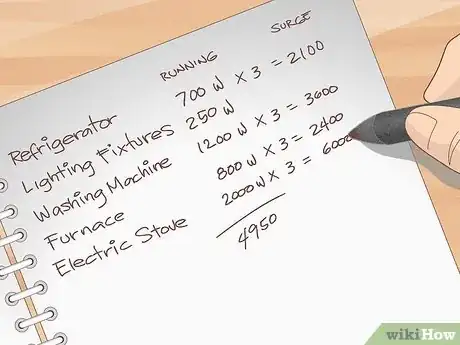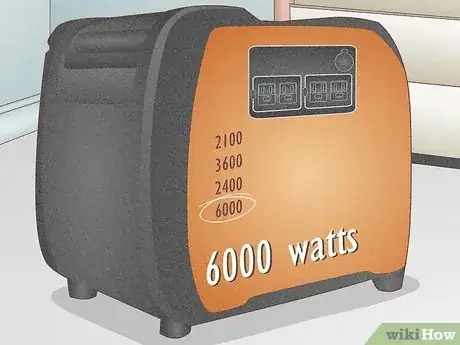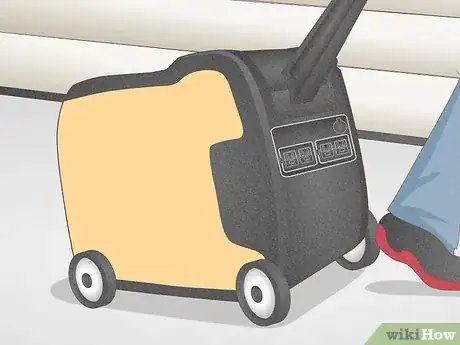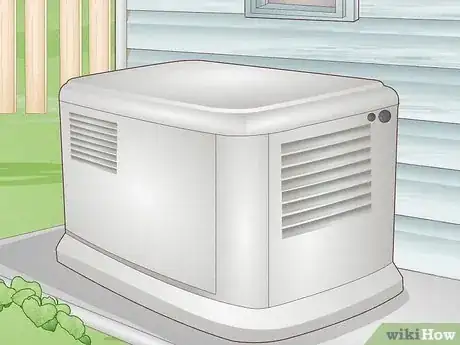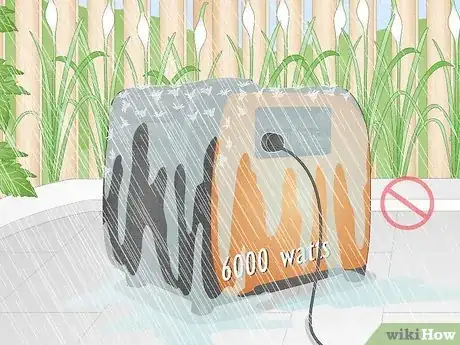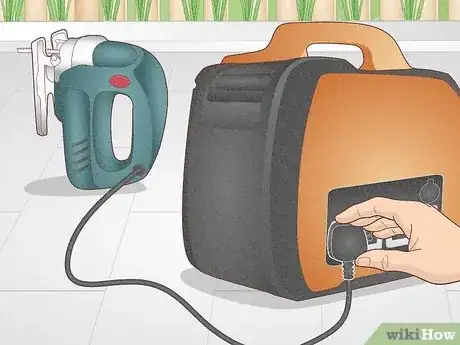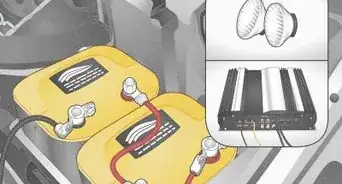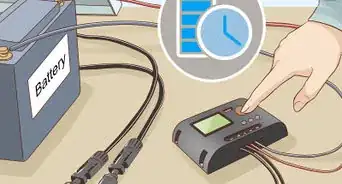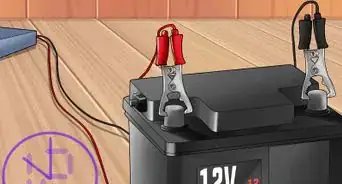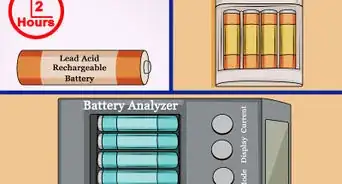This article was co-authored by Frank Boss and by wikiHow staff writer, Luke Smith, MFA. Frank Boss is an Electrician and the Owner of AArdvark Electric Service. With over 25 years of experience, he specializes in all forms of lighting installation including recessed lighting, under-cabinet lighting, and security and flood lights. He also has experience in all forms of residential and commercial electrical services including troubleshooting, correcting code violations, service upgrades, and ceiling fan installation.
There are 15 references cited in this article, which can be found at the bottom of the page.
Whether it’s backup for power outages or a power supply for that new getaway cabin, home generators are a smart addition to your lineup of household appliances. It can be a little confusing navigating your buying options, however–how much power do you actually need? How do you choose a generator will cover your needs? Don’t worry: we’re here to make the buying process simple and understandable, with explanations and tips to get you set up with a reliable generator.
Things You Should Know
- Purchase a generator that can provide enough wattage to power all the appliances you intend to use.
- Add up the running wattages of all the appliances you intend to use, then find the surge wattage.
- Select from among the most common types of generators, which are portable generators, inverter generators, and standby generators.
- Always operate a generator in a dry, well-ventilated area.
Steps
How to Choose the Right Size Generator for Your Needs
-
1Make a list of which appliances you’ll need to power. Generators can only provide so much power, and so it’s important to consider exactly how much power you’ll need to generate. To do this, begin by making a list of all the appliances you’ll want the generator to provide power to.[1]
- You can decide the size of the generator based on your power requirements.
- Consider whether you want to operate all the circuits in your home or just a few emergency circuits.
- Common appliances you’ll want to consider include refrigerators, lighting fixtures, washing machines, heating or cooling appliances, stovetops and ovens, and anything else you might use regularly or need in an emergency.
-
2Add up the wattages of the appliances on the list. Each generator provides a certain wattage output, so you’ll need to get an approximation of how much power you expect to be using. Check the label of each appliance (usually near any power ports or on cables) on your list for this information.[2] Below are some approximate “running wattages” (the power an appliance needs for continued operation) for common appliances:
- Refrigerator (700W)
- 5-10 lighting fixtures (250W)
- Laptop (200W)
- Smartphone charger (20W)
- Television (150W)
- Air conditioning unit (1,000W)
- Furnace (800W)
- Dishwasher (1,500W)
- Burner on electric stove (2,000W)[3]
- Oven (2,400W)
- Microwave (1,200W)
- Toaster (1,200W)
- WiFi Router (6W)
- Hair Dryer (1,500W)[4]
- Sump pump (1,300-2,150W) [5]
- If the wattage of the appliance is not listed, you can estimate it by multiplying the listed voltage (V) use by the listed amps (A). Smaller appliances in the United States typically use 120 volts, and larger appliances like stoves and washers, use 240 volts.[6]
Advertisement -
3Calculate your surge wattage. “Surge wattage” or “starting wattage” refers to the amount of power needed to get an appliance running, and is often a higher value than the general or running wattage. To calculate this, take the appliance on your list with the highest running wattage and check the value listed on the user manual included with the appliance.[7]
- Alternatively, surge wattage is usually 2-3 times the running wattage, so multiply the item’s running wattage by 3, just to be safe.[8]
-
4Purchase a generator that can handle the calculated wattage. The generator you choose should be able to accommodate both the running wattage and the surge wattage of the most energy-demanding appliance.[9] This means that you should purchase a generator that indicates it can produce at least as much wattage as either the surge or running wattage, whichever value is higher.
- Generators will often describe their “continuous power rating,” which is how much power the generator can sustain.[10] This value should correspond to your running wattage.
- If you’re planning to run a number of high-energy appliances, the running wattage may be higher than the surge wattage you’ve calculated. This is because while you may run many appliances at once, you typically won’t be turning them all on at the same time.
- Purchase a generator with slightly more capacity than you think you’ll need, so that you’ll always have power when you need it.
Types of Generators
-
1Portable generators Portable generators are easy to transport and typically run on gasoline. These generators are most commonly used in blackouts to power only some necessary appliances, and work by converting mechanical energy into electrical energy, often by burning some kind of fuel.[11]
- They’re often the most affordable option, starting at around $700.[12]
-
2Inverter generators These are similar to portable generators, but are oftentimes even more lightweight, quieter, produce less emissions, and are best suited for camping or other travel activities. However, inverter generators do tend to be pricier and tend to produce less power overall.[13]
- These also start at around $700, but can go as high as $2,300, based on size.[14]
-
3Standby generators Standby generators are the heftiest of the 3, and are installed permanently for use at a building, and so are not portable. Often propane- or natural gas-fueled, these generators provide a good deal of power in the event of a power outage, and tend to be the most expensive option.[15] These are best when you need to provide power to an entire home, or expect frequent grid failures, and will require a professional to install them for you.[16]
- Standby generators are often between $4,000 and $6,000, plus the cost of professional installation.[17]
- Think whether you want the generator to come on automatically (natural gas or propane) or have a manual hook-up (portable gas generator).
How to Stay Safe While Using a Generator
-
1Always run a generator in a well-ventilated space. As generators work, they produce exhaust, which is a major source of carbon monoxide. To avoid carbon monoxide poisoning, run your generator outside (a minimum of 10 feet away from the home, but preferably as far away as possible) or in a space with open windows and adequate airflow, preferably as far away from the house as possible.[18]
- Also use a portable carbon monoxide detector to help detect the presence of carbon monoxide, for added safety.[19]
-
2Keep your generator dry and don’t use it when it’s raining. Store and use your generator under a roofed space, like a patio, or under a tarp or an eave. This will reduce the risk of electrocution.[20]
-
3Plug your appliances directly into the generator, or use a transfer switch. Use an extension cord to run your appliances to the generator, or have a professional install a power transfer system, which are typically used for larger, standby generators that are incorporated into a home’s internal wiring.[21] This ensures that not only yourself and your appliances operate safely, but that the grid remains intact, as well.
References
- ↑ https://www.consumerreports.org/generators/how-to-choose-the-right-size-generator-a4942266454/
- ↑ https://www.consumerreports.org/generators/how-to-choose-the-right-size-generator-a4942266454/
- ↑ https://www.consumerreports.org/generators/how-to-choose-the-right-size-generator-a4942266454/
- ↑ https://energyusecalculator.com/electricity_hairdryer.htm
- ↑ https://www.cnet.com/home/energy-and-utilities/generator-buying-guide-what-you-need-to-know/
- ↑ https://www.energy.gov/energysaver/estimating-appliance-and-home-electronic-energy-use
- ↑ https://www.electricalengineeringtoolbox.com/2017/07/how-to-size-portable-generator-for-home.html
- ↑ https://www.electricalengineeringtoolbox.com/2017/07/how-to-size-portable-generator-for-home.html
- ↑ https://www.electricalengineeringtoolbox.com/2017/07/how-to-size-portable-generator-for-home.html
- ↑ https://electricalschool.org/continuousrating/
- ↑ https://www.popularmechanics.com/adventure/reviews/a11855/home-generator-101-how-to-power-on-when-the-power-goes-out/
- ↑ https://www.nytimes.com/wirecutter/reviews/best-portable-generator/
- ↑ https://www.cnet.com/home/energy-and-utilities/generator-buying-guide-what-you-need-to-know/
- ↑ https://www.homedepot.com/b/Outdoors-Outdoor-Power-Equipment-Generators-Inverter-Generators/N-5yc1vZcbpx
- ↑ https://www.cnet.com/home/energy-and-utilities/generator-buying-guide-what-you-need-to-know/
- ↑ https://www.popularmechanics.com/home/how-to/a8523/should-you-buy-a-standby-generator-14880060/
- ↑ https://www.homedepot.com/s/standby+generator?NCNI-5
- ↑ https://www.cdc.gov/co/videos/generator-how-close-transcript.htm
- ↑ https://www.cnet.com/home/energy-and-utilities/generator-buying-guide-what-you-need-to-know/
- ↑ https://www.redcross.org/get-help/how-to-prepare-for-emergencies/types-of-emergencies/power-outage/safe-generator-use.html
- ↑ https://www.electricgeneratorsdirect.com/stories/59-How-to-Connect-a-Portable-Generator-to-a-Home.html
- ↑ https://www.redcross.org/get-help/how-to-prepare-for-emergencies/types-of-emergencies/power-outage/safe-generator-use.html
- ↑ https://homeinspectioninsider.com/backfeed-electrical-panel-with-generator/M/


